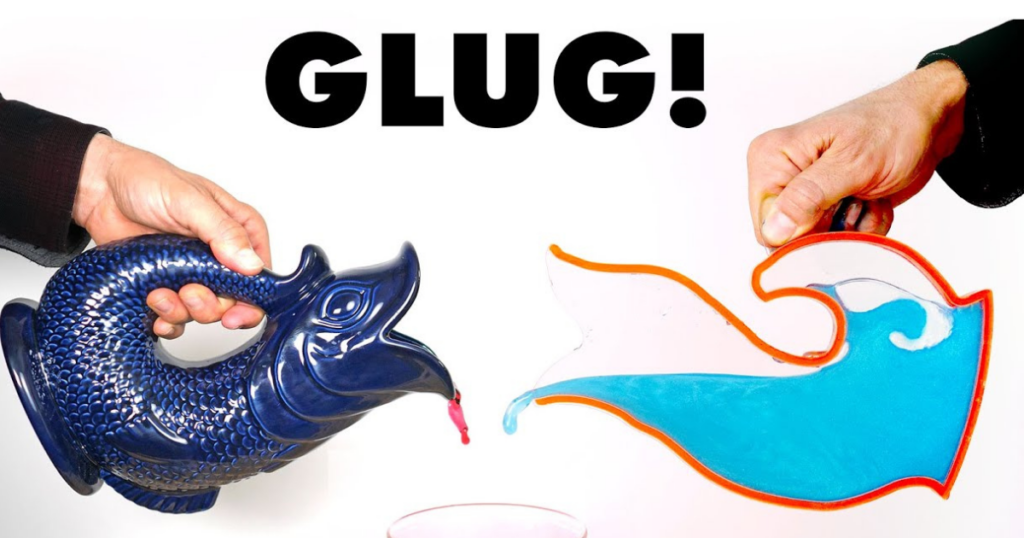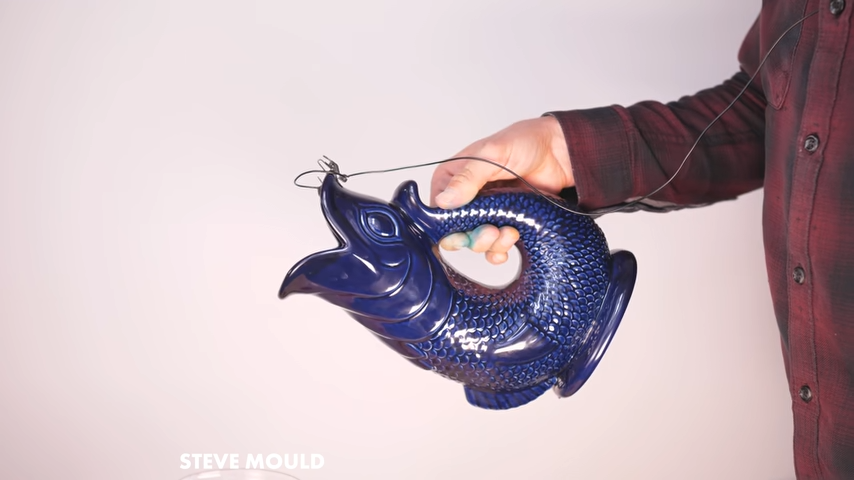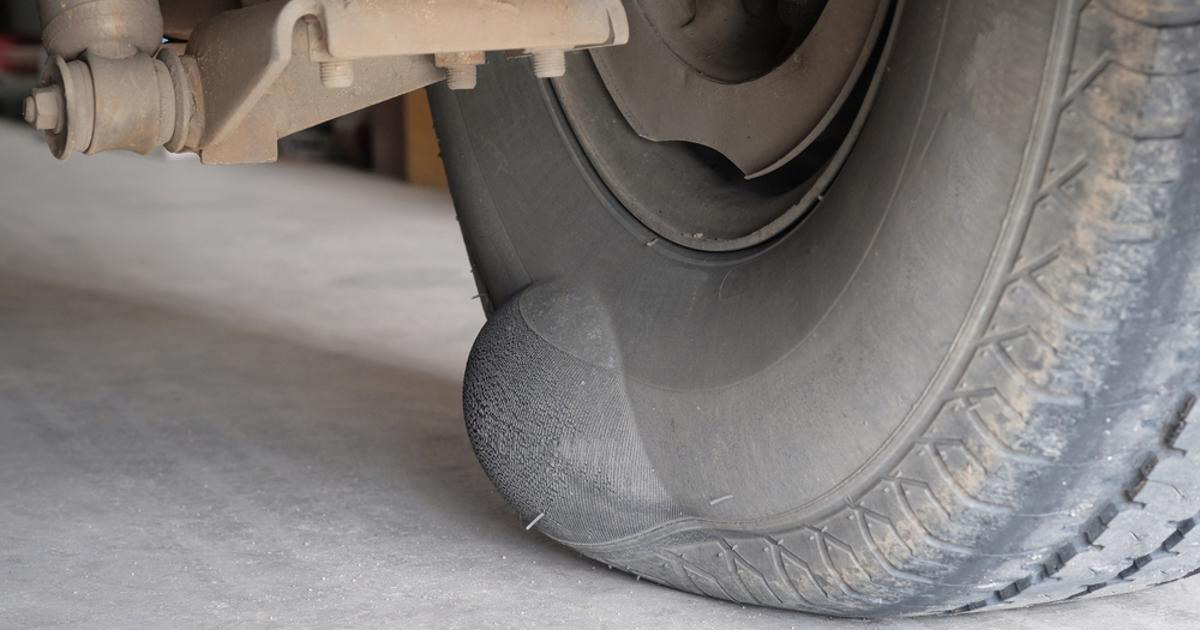
Have you ever encountered the playful Gluggle Jug, known for its comical gurgling as you pour water? Intrigued by its secret melody, I embarked on a journey to unveil the physics behind the fun. This article delves into my investigation, where we’ll explore bubbles, resonance, and even smash a jug (metaphorically, of course!).
Seeking the Glug Source:

Initially, I suspected a connection to the “bottle smash” phenomenon, where striking the top of a bottle can shatter the bottom due to water inertia and cavitation bubbles. While fascinating, I realized it wasn’t the answer for the Gluggle Jug.
Inspiration from a Splashback:
A different memory sparked intrigue: the occasional water jet spraying from a tilting glass, accompanied by a “gloip” sound similar to the glugging jug. Could this be replicated in a controlled manner?
The Science of Splashback:
The key, we discover, lies in the glass’s shape. As the wide top narrows towards the bottom, the water flow accelerates, seeking escape through the smaller opening. This “conservation of mass” principle explains the jet, and potentially, the glugging magic.
Beyond Speculation: Building a Transparent Jug:

To truly see what’s happening, I needed a transparent jug. Cutting the original was impractical, so I laser-cut a 2D acrylic replica based on the jug’s dimensions, particularly the tail section where the gurgling magic happens.
Smashing for Science (and Transparency):
Desperate for an internal view, I sacrificed another jug to the hammer for inspection. This sacrifice fueled the final design of the transparent jug, complete with an inlet for the water’s journey.
The Unmasking: Bubbles, the Unsung Heroes:

The big reveal? Bubbles! They’re the key players, moving back and forth between the jug’s chambers, creating the gurgling symphony. Each “gloip” marks a bubble’s transition.
Sound Secrets: Comparing Jugs and Bottles:
Unlike pouring from a bottle, the Gluggle Jug’s glugs are amplified because the bubbles burst into an open cavity, allowing the sound to reach our ears more effectively. Tilting the jug mutes the glugs as the bubbles travel inwards, entering the closed tail section.
The Pitch Perfect Jug:
I hypothesized that the glug’s pitch relates to the pipe’s resonant frequency. Science to the rescue! Using a spectrometer, we measured the sound frequency at 480 Hz. Calculating the wavelength and dividing by 4 (accounting for the pipe’s open-closed nature) led us to… 18 centimeters. Remarkably, this aligns with the pipe’s actual height!
The Gluggle Jug: A Celebration of Science and Fun:
From bubbles to resonance, the Gluggle Jug’s secret is a delightful blend of science and entertainment. So, the next time you encounter this gurgling wonder, remember the fascinating physics at play, and raise a (gluggle-free) glass to the joy of scientific exploration!




